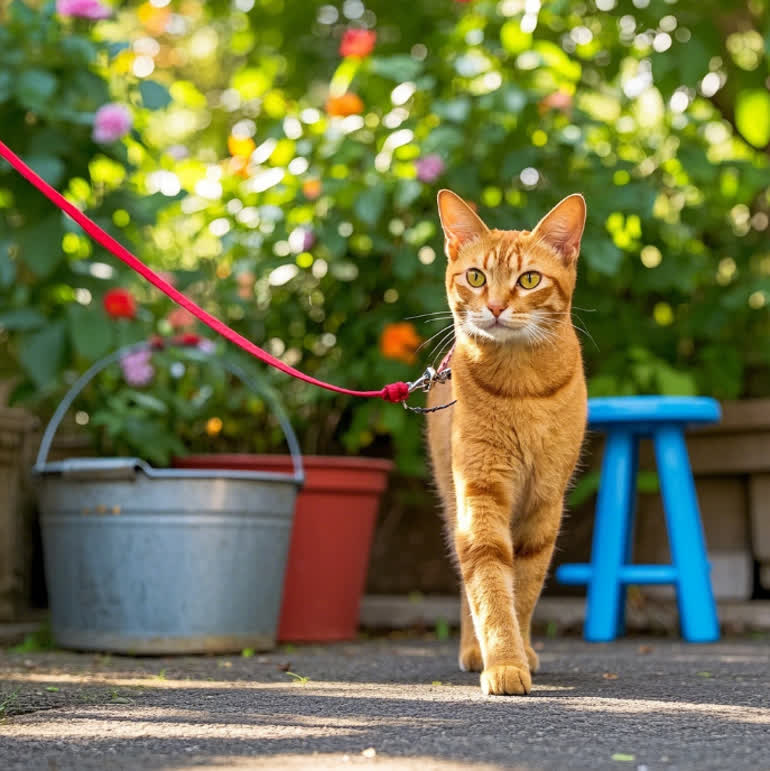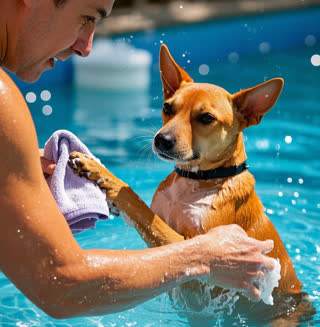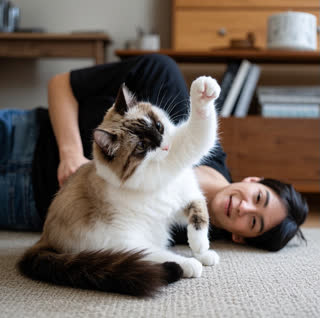Understanding the Abyssinian’s Nature
Step 1: Choose the Right Equipment
Leash Length: Use a 4–6-foot nylon or leather leash for controlled freedom. Avoid retractable leashes, which can startle your cat.
Rewards: Keep high-value treats (e.g., freeze-dried chicken) and interactive toys handy to motivate your cat during training.
Step 2: Indoor Harness Introduction
Step 3: Progressive Training: From Indoors to Outdoors
- Indoor Adaptation:
Days 1–3: Buckle the harness loosely for 5–10 minutes, pairing it with treats and play.
Days 4–7: Attach the leash and let your cat drag it around under supervision. Encourage movement with toys or treats.
Days 8–14: Gently guide them with the leash, using a soft voice and rewards. Keep sessions short (10–15 minutes).
- Outdoor Transition:
Start in a quiet, enclosed space like your backyard. Let your cat dictate the pace—they may sit, sniff, or dart briefly.
Gradually expose them to new environments, rewarding calm behavior. Avoid busy areas initially.
Common Challenges & Solutions
Harness Resistance: If your cat resists, take a break. Use the harness as a toy (e.g., drag it playfully) and associate it with positive experiences. Never force it.
Reluctance to Move: Place treats along the path or use a toy to encourage them. Patience is key—some cats take weeks to feel confident.
Overexcitement: If your cat bolts, gently guide them back. Avoid chasing, as this reinforces the behavior.
Outdoor Safety Tips
Parasite Prevention: Ensure your cat is protected against fleas, ticks, and heartworms.
Toxic Plants: Avoid areas with lilies, daffodils, or other harmful flora.
Socialization: Gradually introduce your cat to other pets and people to build confidence.
Long-Term Training Routine
Daily Walks: Aim for 15–20 minutes daily, increasing duration as they adapt.
Varied Environments: Explore parks, trails, or quiet neighborhoods to keep training engaging.
Advanced Commands: Teach commands like “come” or “stop” using treats and consistency.
Abyssinian-Specific Needs
High Energy: Incorporate puzzle toys or scent games into walks to satisfy their mental needs.
Social Interaction: Invite friends or family to join walks to keep them engaged.
Health Checkups: Regular vet visits ensure your cat is fit for outdoor activities.
FAQ
A: Most cats adapt within 2–4 weeks, though some may take longer. Consistency and patience are crucial.
A: Yes! While kittens adapt faster, adult cats can learn with gradual exposure.
A: Respect their preferences. Focus on indoor enrichment instead.










